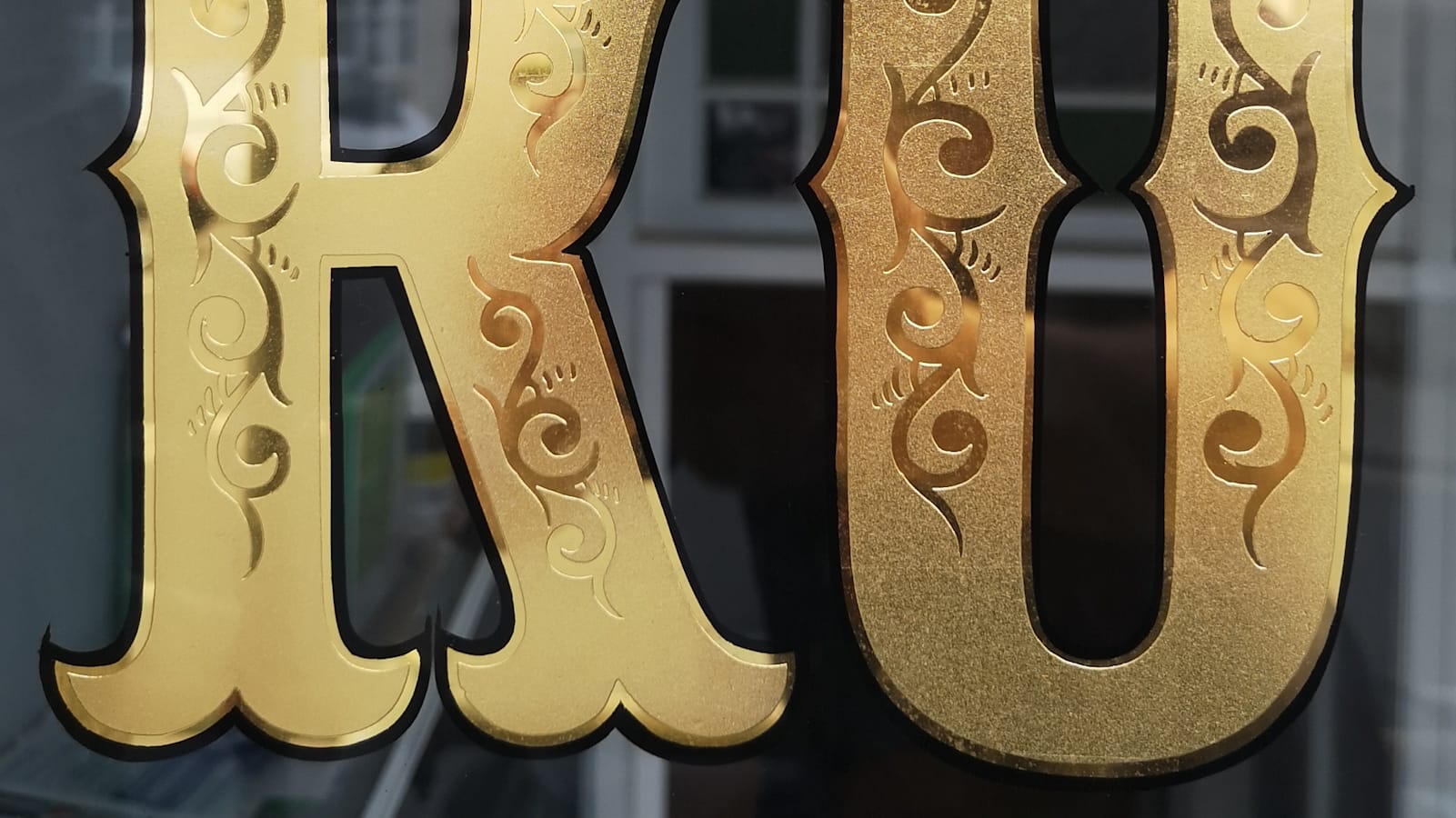Bringing a Gilded Victorian Transom Window Back to Life
Andy at AJ Signs in Dorset gives a new lease of life to a beautiful piece of Victorian glasswork.

Victorian houses in the UK often have hand-painted and gilded house names or numbers on the pane of glass above the front door; the transom window. They vary in their execution, and I was contracted to restore a particularly fine example from around 1900 in Portland, Dorset.
To produce the original piece, the glass was first chosen and cut to size. It's possible the sign painter did this themself as glazing was often a complementary skill to sign painting and general decorative work.
To acid etch the glass, a 'resist' was needed to protect (or mask) the areas where the glass was to remain clear. Brunswick black was first applied to the whole sheet of glass, and then a thin sheet of lead was stuck to this with gold size. The design was laid over this, with a blade used to remove excess lead, and a solvent such as white spirit to take off the gold size and Brunswick black. This left the relevant parts of the design exposed for the acid etching.
